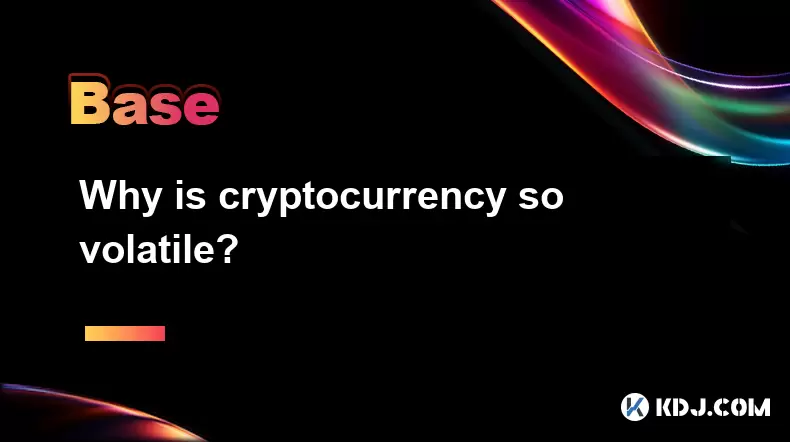-
 Bitcoin
Bitcoin $117400
0.05% -
 Ethereum
Ethereum $3767
0.13% -
 XRP
XRP $3.554
2.85% -
 Tether USDt
Tether USDt $1.000
0.01% -
 BNB
BNB $766.5
1.11% -
 Solana
Solana $196.6
8.51% -
 USDC
USDC $0.0000
0.01% -
 Dogecoin
Dogecoin $0.2716
-0.23% -
 Cardano
Cardano $0.8901
3.81% -
 TRON
TRON $0.3144
0.09% -
 Hyperliquid
Hyperliquid $44.52
-3.11% -
 Stellar
Stellar $0.4735
2.59% -
 Sui
Sui $3.978
2.18% -
 Chainlink
Chainlink $19.59
1.45% -
 Hedera
Hedera $0.2715
0.05% -
 Avalanche
Avalanche $25.48
1.87% -
 Bitcoin Cash
Bitcoin Cash $523.6
-4.49% -
 Shiba Inu
Shiba Inu $0.00001551
0.09% -
 Litecoin
Litecoin $115.9
-0.92% -
 UNUS SED LEO
UNUS SED LEO $8.992
0.06% -
 Toncoin
Toncoin $3.336
2.13% -
 Polkadot
Polkadot $4.510
0.70% -
 Uniswap
Uniswap $10.91
2.37% -
 Ethena USDe
Ethena USDe $1.001
0.02% -
 Pepe
Pepe $0.00001421
1.31% -
 Monero
Monero $320.2
-1.73% -
 Bitget Token
Bitget Token $4.950
0.14% -
 Dai
Dai $0.0000
-0.02% -
 Aave
Aave $323.3
0.00% -
 Bittensor
Bittensor $447.5
8.38%
Why is cryptocurrency so volatile?
Cryptocurrency volatility stems from emotional trading, regulatory shifts, tech updates, low liquidity, and speculative leverage, often amplified by social media and macroeconomic factors.
Jul 21, 2025 at 06:15 pm

Market Sentiment and Investor Behavior
Cryptocurrency markets are heavily influenced by investor sentiment and behavior, which often leads to significant price fluctuations. Unlike traditional financial markets, crypto markets operate 24/7, allowing for continuous trading and rapid reactions to news or events. Social media trends, celebrity endorsements, and public perception can drive prices up or down within minutes.
For example, a single tweet from a high-profile individual can trigger massive buying or selling pressure. This emotional trading behavior amplifies volatility, especially in smaller-cap cryptocurrencies with lower liquidity. Additionally, the lack of widespread institutional adoption means retail investors dominate trading activity, further contributing to erratic price swings.
Regulatory Uncertainty and Legal Challenges
Regulatory changes and government actions play a critical role in cryptocurrency volatility. Many countries are still developing frameworks to regulate digital assets, leading to uncertainty among investors. A sudden announcement of a crypto ban or stricter regulations can cause panic selling, while favorable regulatory news can spark rapid price increases.
For instance, China’s crackdown on cryptocurrency mining and trading in 2021 led to a sharp market downturn. Conversely, the approval of a Bitcoin ETF in certain jurisdictions can result in bullish trends. The absence of a unified global regulatory standard creates a fragmented environment, making crypto assets more susceptible to abrupt price movements.
Technological Developments and Network Upgrades
Advancements in blockchain technology can significantly impact cryptocurrency prices. Major protocol upgrades, such as Ethereum’s transition to Proof of Stake or Bitcoin’s halving events, often lead to heightened volatility. Investors speculate on the potential benefits of these upgrades, such as improved scalability or reduced issuance rates, which can drive both buying and selling pressure.
Hard forks, software bugs, or security breaches also contribute to price swings. When a blockchain undergoes a contentious fork, uncertainty about the future of the network can lead to sharp price drops. Similarly, news of a major exchange hack or wallet vulnerability can trigger sell-offs, as trust in the ecosystem is temporarily shaken.
Liquidity and Market Depth Issues
Cryptocurrency markets often suffer from lower liquidity compared to traditional financial markets, making them more prone to volatility. In markets with limited liquidity, even relatively small trades can cause significant price movements, especially for altcoins with low trading volumes.
Exchanges with shallow order books can experience wild price swings during high-impact events, such as breaking news or sudden market corrections. This lack of depth means that large traders, or "whales," can manipulate prices by placing substantial buy or sell orders, further contributing to volatility.
Speculation and Leverage Trading**
A large portion of cryptocurrency trading is speculative in nature, with traders seeking short-term gains rather than long-term value. The widespread use of leverage in crypto derivatives markets exacerbates price swings, as liquidations can trigger cascading sell-offs or rapid rallies.
Margin trading allows investors to borrow funds to amplify their positions, but when prices move against them, forced liquidations occur. This process can create a domino effect, where falling prices lead to more liquidations, which in turn drive prices even lower. Such mechanisms contribute to the extreme volatility observed in crypto markets, particularly during periods of heightened uncertainty.
Frequently Asked Questions
What role does media coverage play in cryptocurrency volatility?
Media coverage significantly influences cryptocurrency prices. Positive or negative news articles, viral social media posts, or influencer commentary can drive investor behavior, leading to rapid price changes. Sensational headlines or misinformation can cause panic or euphoria, further intensifying market swings.
How do macroeconomic factors affect cryptocurrency volatility?
Cryptocurrencies are increasingly correlated with broader financial markets. Changes in interest rates, inflation data, or geopolitical tensions can impact investor sentiment, indirectly affecting crypto prices. During economic uncertainty, some investors view cryptocurrencies as alternative assets, while others sell off digital holdings to cover losses elsewhere.
Can stablecoins also experience volatility?
While stablecoins are designed to maintain a stable value, typically pegged to fiat currencies like the US dollar, they are not entirely immune to volatility. Loss of confidence in the issuer, insufficient reserves, or regulatory scrutiny can lead to de-pegging events, where the stablecoin trades below its intended value. Such incidents can ripple through the broader crypto market, triggering wider volatility.
Is volatility likely to decrease as the crypto market matures?
As the cryptocurrency market grows and becomes more institutionalized, volatility may decrease over time. Increased liquidity, better regulatory clarity, and broader adoption can contribute to more stable price movements. However, given the nascent nature of the industry and its sensitivity to external factors, significant volatility is expected to persist in the near to medium term.
Disclaimer:info@kdj.com
The information provided is not trading advice. kdj.com does not assume any responsibility for any investments made based on the information provided in this article. Cryptocurrencies are highly volatile and it is highly recommended that you invest with caution after thorough research!
If you believe that the content used on this website infringes your copyright, please contact us immediately (info@kdj.com) and we will delete it promptly.
- Bitcoin, Trump Media, and Acquisition: A New York Perspective
- 2025-07-22 06:30:12
- Venture Capital, Crypto Treasuries, and Ethena (ENA): A New York Perspective
- 2025-07-22 06:50:13
- Solana: Building a Decentralized Nasdaq with Block Assembly Marketplace?
- 2025-07-22 06:30:12
- Jito, BAM, and Solana MEV: A New Era for Blockspace?
- 2025-07-22 06:50:13
- Raydium, Crypto Payroll, and Transformation: A New Era for Fintech
- 2025-07-22 07:30:12
- Arctic Pablo Coin Presale: The Meme Coin Opportunity of 2025?
- 2025-07-22 07:35:12
Related knowledge

What is the difference between CeFi and DeFi?
Jul 22,2025 at 12:28am
Understanding CeFi and DeFiIn the world of cryptocurrency, CeFi (Centralized Finance) and DeFi (Decentralized Finance) represent two distinct financia...

What is the difference between a sidechain and a Layer 2?
Jul 20,2025 at 11:35pm
Understanding the Concept of SidechainsA sidechain is a separate blockchain that runs parallel to the main blockchain, typically the mainnet of a cryp...

What is the Inter-Blockchain Communication Protocol (IBC)?
Jul 19,2025 at 10:43am
Understanding the Inter-Blockchain Communication Protocol (IBC)The Inter-Blockchain Communication Protocol (IBC) is a cross-chain communication protoc...

How does sharding improve scalability?
Jul 20,2025 at 01:21am
Understanding Sharding in BlockchainSharding is a database partitioning technique that is increasingly being adopted in blockchain technology to enhan...

What is the "crypto trilemma" of scalability, security, and decentralization?
Jul 19,2025 at 06:28pm
Understanding the Concept of the Crypto TrilemmaThe crypto trilemma refers to the challenge of simultaneously achieving scalability, security, and dec...

What is a cliff and vesting schedule in tokenomics?
Jul 20,2025 at 10:28am
What Does a Cliff Mean in Tokenomics?In tokenomics, a cliff refers to a specific period during which token holders are not allowed to access or transf...

What is the difference between CeFi and DeFi?
Jul 22,2025 at 12:28am
Understanding CeFi and DeFiIn the world of cryptocurrency, CeFi (Centralized Finance) and DeFi (Decentralized Finance) represent two distinct financia...

What is the difference between a sidechain and a Layer 2?
Jul 20,2025 at 11:35pm
Understanding the Concept of SidechainsA sidechain is a separate blockchain that runs parallel to the main blockchain, typically the mainnet of a cryp...

What is the Inter-Blockchain Communication Protocol (IBC)?
Jul 19,2025 at 10:43am
Understanding the Inter-Blockchain Communication Protocol (IBC)The Inter-Blockchain Communication Protocol (IBC) is a cross-chain communication protoc...

How does sharding improve scalability?
Jul 20,2025 at 01:21am
Understanding Sharding in BlockchainSharding is a database partitioning technique that is increasingly being adopted in blockchain technology to enhan...

What is the "crypto trilemma" of scalability, security, and decentralization?
Jul 19,2025 at 06:28pm
Understanding the Concept of the Crypto TrilemmaThe crypto trilemma refers to the challenge of simultaneously achieving scalability, security, and dec...

What is a cliff and vesting schedule in tokenomics?
Jul 20,2025 at 10:28am
What Does a Cliff Mean in Tokenomics?In tokenomics, a cliff refers to a specific period during which token holders are not allowed to access or transf...
See all articles

























































































